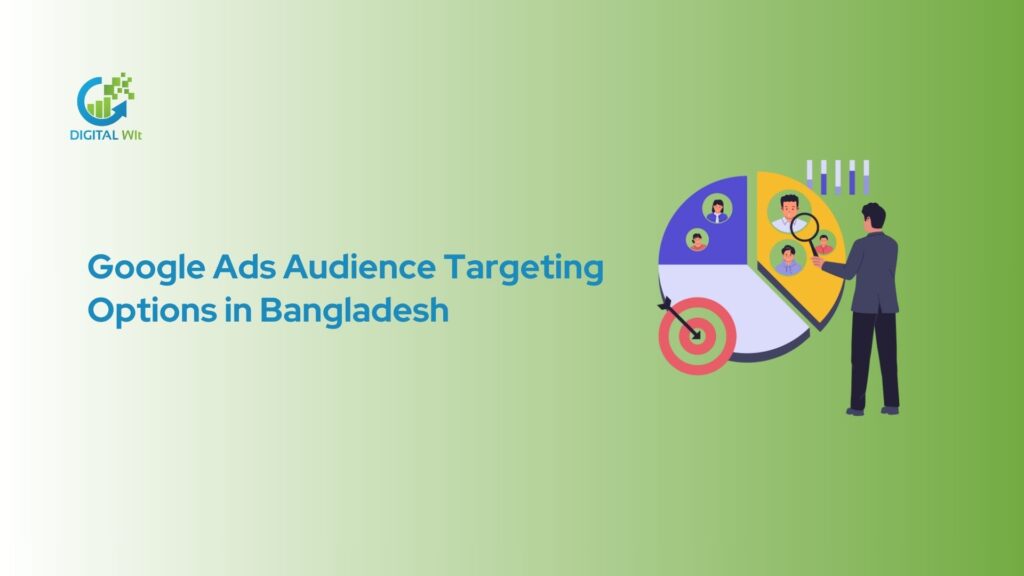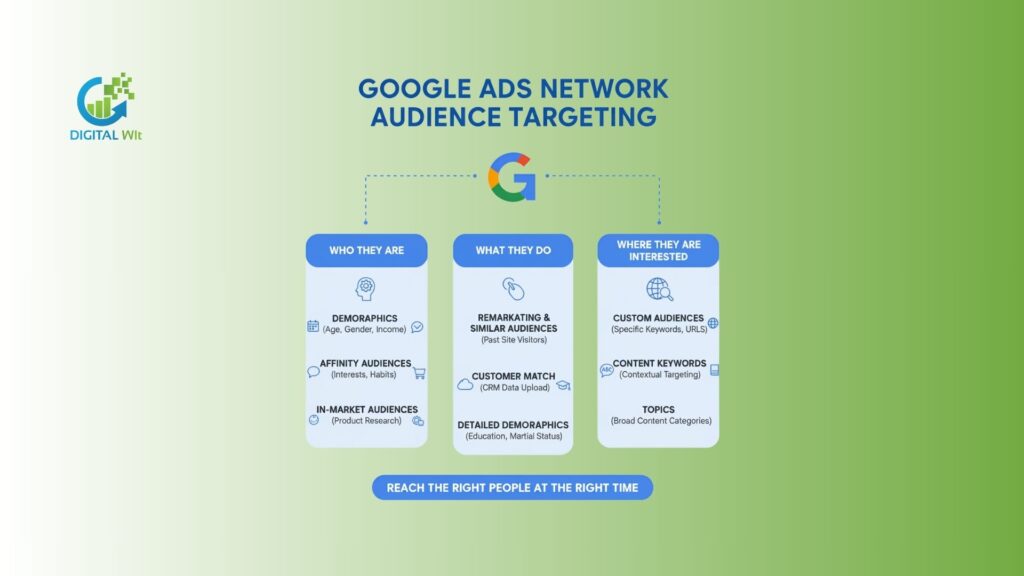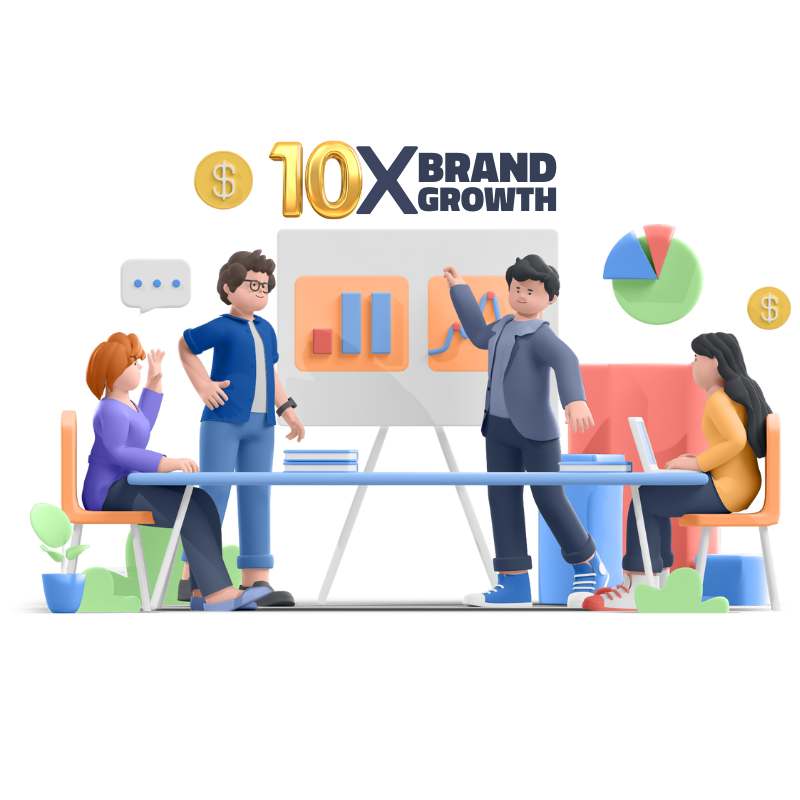More and more businesses in Bangladesh are going online to find new customers. But just being online isn’t enough. You need to reach the right people who are actually interested in what you sell.
That’s where Google Ads can help. It offers smart audience targeting tools that let you show your ads to people who are most likely to buy your products or services. This not only helps you get better results but also saves your advertising money.

To get the best outcome, it’s important to combine audience targeting with insight of Google Ads Keyword Research. When you know what your audience is searching for and target them correctly, your ads reach the right people at the right time.
At Digital Wit, we’ve seen how powerful this combination can be for Bangladeshi businesses. When audience targeting is paired with the right campaign structure, your ads don’t just appear, they perform.
In this blog, we’ll explain the main audience targeting options available in Bangladesh and how you can use them to grow your business.
What Does Mean by Google Ads Audience Targeting Options
Google Ads audience targeting options allow you to show your ads only to people who are likely to be interested in your business.
Instead of showing ads to everyone, you focus on users who fit specific criteria.
Audience targeting is divided into different types:
Demographics : Target based on age, gender, parental status, and income.
Affinity Audiences : Reach people with specific interests and lifestyles.
In-Market Audiences : Connect with users actively looking to buy products or services.
Life Event Targeting : Target users experiencing major life events, like moving homes or getting married.
Custom Segments : Create audiences using keywords, URLs, or apps related to your business.
By using these targeting options, your ads reach the right people, improve engagement, and increase conversions.
How Does Google Ads Audience Targeting Work
Google Ads uses data from people’s searches, browsing activity, app usage, and online behavior to understand what they’re interested in.
Based on this information, it groups users into different audience types so you can choose who should see your ads.
If you’re not sure how to plan your ad setup, first you need to understand Google Ads campaign structure . That way, your audience targeting will match your campaign goals and give you better results.
- Demographic Targeting – You can show ads based on age, gender, or household income.
- Affinity Audience – Targets people with long-term interests, like fitness lovers seeing ads for sports gear.
- In-Market Audience – Reaches users who are ready to buy, based on their recent searches or website visits.
- Custom Audiences – Lets you define your own interests or upload data so Google can find similar users.
- Remarketing – Shows ads to people who have already visited your website or app to encourage them to return.
Here’s how audience targeting works in Google Ads:
Using these targeting options helps your ads reach the right people and makes every taka of your ad budget count.
Core Google Ads Audience Segments
Demographic Targeting
Demographic targeting helps you reach users by age, gender, parental status, and household income.
For example, if you sell baby products, you can target parents only. This avoids wasting money on irrelevant clicks.
Affinity Audiences
Affinity audiences are people with long-term interests and habits.
For example, travel enthusiasts, fitness lovers, or tech fans. These users may not be ready to buy now but can be nurtured with consistent ads.
In-Market Audiences
In-market audiences are ready-to-buy users. Google identifies them by tracking searches, site visits, and online behavior.
For instance, someone searching “best smartphones under 30,000 BDT” is in-market for electronics.
Life Event Targeting
Life event targeting focuses on users during major milestones.
Weddings, graduations, moving houses, or having a baby can influence buying decisions. Ads tailored to these events perform better.
Custom Segments
Custom segments let you define audiences using:
- Keywords related to your products
- URLs of relevant websites
- Apps users have installed
Tip: This is helpful if you want to reach a specific group not covered by standard audiences.
Google Ads Network Audience Targeting
Search Network Targeting
Search network targeting shows ads to users actively searching on Google. Options include:
- Keywords: Ads appear when users search relevant terms.
- Dynamic Search Ads: Google generates ads automatically based on your website content.
- Responsive Search Ads: Ads automatically adjust headlines and descriptions for the best performance.
Display Network Targeting
Display ads appear across millions of websites and apps. Targeting options include:
Content or Contextual Targeting: Ads show on relevant topics and pages.
Audience Targeting: Focus on specific demographics, interests, or behaviors.
Placements: Choose specific websites or apps where ads appear.

Remarketing Targeting
Remarketing targets users who previously interacted with your website or app.
Options include:
Remarketing Pixel: Track users visiting your site and show them ads later.
Google Analytics Imports: Use analytics data to create audience segments.
Customer Uploads: Upload your email list to target existing customers.
Advanced Targeting Strategies for Bangladeshi Advertisers
Similar Audiences
Google finds new users with characteristics similar to your existing customers. This expands reach efficiently.
Geographic Targeting
Focus on cities, regions, or districts within Bangladesh. For example, targeting Dhaka for a local business ensures relevance.
Language Targeting
Use Bengali, English, or both to match user preferences. This increases engagement and ad relevance.
Cultural Considerations
Local festivals, holidays, and consumer habits matter. Tailoring your ads improves performance. For instance, Ramadan or Pohela Boishakh campaigns attract more clicks.
Best Practices for Effective Audience Targeting
- Regular Monitoring: Track campaign performance and adjust audiences regularly.
- Use Google Analytics: Gain deeper insights into user behavior.
- A/B Testing: Test different segments and ad creatives to identify what works best.
- Prevent Ad Fatigue: Refresh ads regularly to avoid audience burnout.
- Combine Audience Types: Mix demographics, interests, and custom segments for maximum impact.
Challenges and Solutions in Bangladesh
Data Privacy
Ensure compliance with regulations while using customer data. Avoid misuse to maintain trust.
Internet Penetration Variability
Some regions have slow or limited internet. Use mobile-friendly ads and adjust targeting.
Ad Fatigue
Users may ignore repeated ads. Rotate creatives and vary messaging to maintain interest.
Google Ads Audience Targeting Cheat Sheet
The below cheat sheet helps quickly plan campaigns and choose the right audience.
Demographics: Age, gender, income, parental status
Affinity Audiences: Interests and lifestyle groups
In-Market Audiences: Ready-to-buy users
Life Events: Weddings, moving, graduation
Custom Segments: Keywords, URLs, apps
Remarketing: Past visitors
Similar Audiences: Lookalike users
Geography & Language: Location-specific targeting
Frequently Asked Questions (FAQs)
Q1: How do I choose the right audience for my campaign?
A: Use a mix of demographics, interests, and in-market segments to target users likely to convert.
Q2: What is the difference between in-market and affinity audiences?
A: In-market audiences are ready to buy, while affinity audiences show long-term interests.
Q3: Can I use customer data for targeting safely?
A: Yes, use Google’s Customer Match feature while following privacy rules.
Q4: How often should I update audience segments?
A: Monitor performance monthly and adjust targeting to improve results.
Google Ads audience targeting options in Bangladesh allow businesses to reach the right customers efficiently.
By using demographics, affinity, in-market, custom segments, and remarketing, advertisers can improve ROI and reduce wasted ad spend.
Localizing campaigns for Bangladesh with language, location, and cultural relevance ensures better engagement. Start implementing these strategies today to grow your business online.
























